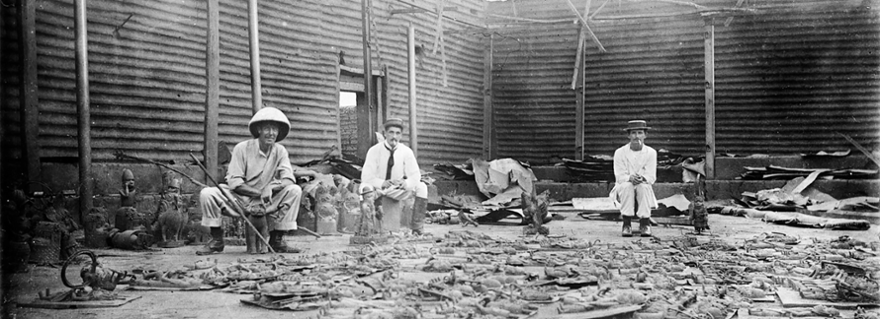
What practical steps can we take to resolve cross-border claims to looted art and prevent illicit trafficking in cultural goods? That's what the European Parliament asked Leiden legal scholar Evelien Campfens. Her advice: develop a registration system, issue art with a 'passport' and set up a European coordination authority.
Campfens' recommendations can be found in a report that she recently presented to the European Parliament. Writing the report was not easy, she explains, because the question was 'very broad'. 'There are many categories of looted or contested art. There is historical looting such as colonial takings and Nazi-looted art, but there are many categories of present-day looting as well, often from war-torn areas. In Ukraine, for example, museums are looted and archaeological finds are illegally exported, but the illicit trafficking is a much wider problem. So it's a broad spectrum that encompasses various specific problems. I have tried to identify common problems and possible solutions for all these categories.'

'Huge eye-opener'
One problem, says Campfens, is that although there are quite some rules these are fragmented. 'International and national laws, but they often are not in line. So the legal framework is highly fragmented and does not join up. At the international level there are also many organisations dealing with the issue of cultural heritage protection − but that is rather haphazard at the EU level.'
A second problem is the traceability of cultural objects. 'It was a huge eye-opener for me as a legal expert to see that artefacts often cannot be properly identified and their trade is mostly not registered. So you can become the owner of looted art without knowledge of the previous history of these objects. That is completely different from second-hand cars, for instance, or other valuable protected objects. Certification or registration systems have long been in place for these, so consumers can distinguish 'right' from 'wrong'.
Provenance research
In her report, Campfens suggests practical steps to address these problems. 'First: make sure that cultural goods are registered and can only be traded if there is a minimum amount of documentation on their ownership history ('provenance'). This will encourage research into the provenance of artworks and discourage future transactions of artefacts that don't have the proper documentation.'
Multiple roles for an agency
Another of her recommendations is to create an EU agency that could assume multiple roles. 'A first role would be setting up a central registration system for works of art', says Campfens. 'That would enhance transparency and make it easier to trace objects and return them if necessary. By extension, such an agency could mediate disputes. You often see in European legal systems that a new owner of art that was looted in the past has become the lawful owner due to rules for prescription or good faith acquisition: the paradox of the lawful possession of unlawfully looted art. An agency could then set up an organisation to advise on or mediate claims or to serve as a neutral appeals committee if parties disagree after proceedings before national restitution committees. This will also result in a body of case law that can bring more clarity to the question what exactly is unlawfully "looted art" and when and to whom something should belong. This agency could also be a base for a network of provenance research specialists. It could have many other roles too, such as thinking about something like a transparency register for all those works of art with no clear provenance.'
It looks as though there may be a follow-up to Campfens' report: MEPs have asked her to advise on a series of workshops, in which experts from the field will discuss how to transform these recommendations into action.
Campfens also wrote a study on protecting cultural heritage in Ukraine earlier this year and advised the UN Office of the High Commissioner for Human Rights on the relationship between human rights and protecting cultural heritage. Her postdoc position at Leiden University is until May 2024.
Text: Jan Joost Aten
Photo above: Inventory of art treasures from the Benin palace, after the British military action and looting of the palace around 1897 (Wikimedia Commons)
Museums, Collections & Society interdisciplinary research programme
Evelien Campfens is a specialist in art and cultural heritage law and a postdoc on Leiden's Museums, Collections and Society interdisciplinary research programme.
The researchers on this programme look from different perspectives at why people choose to collect objects, how museums display these objects and the impression they give people of the past and the present. Leiden archaeologists historians, art historians, anthropologists and a legal scholar are involved in this programme. Their joint research gives people worldwide the fullest, most accurate picture of themselves and others when they visit a museum.






